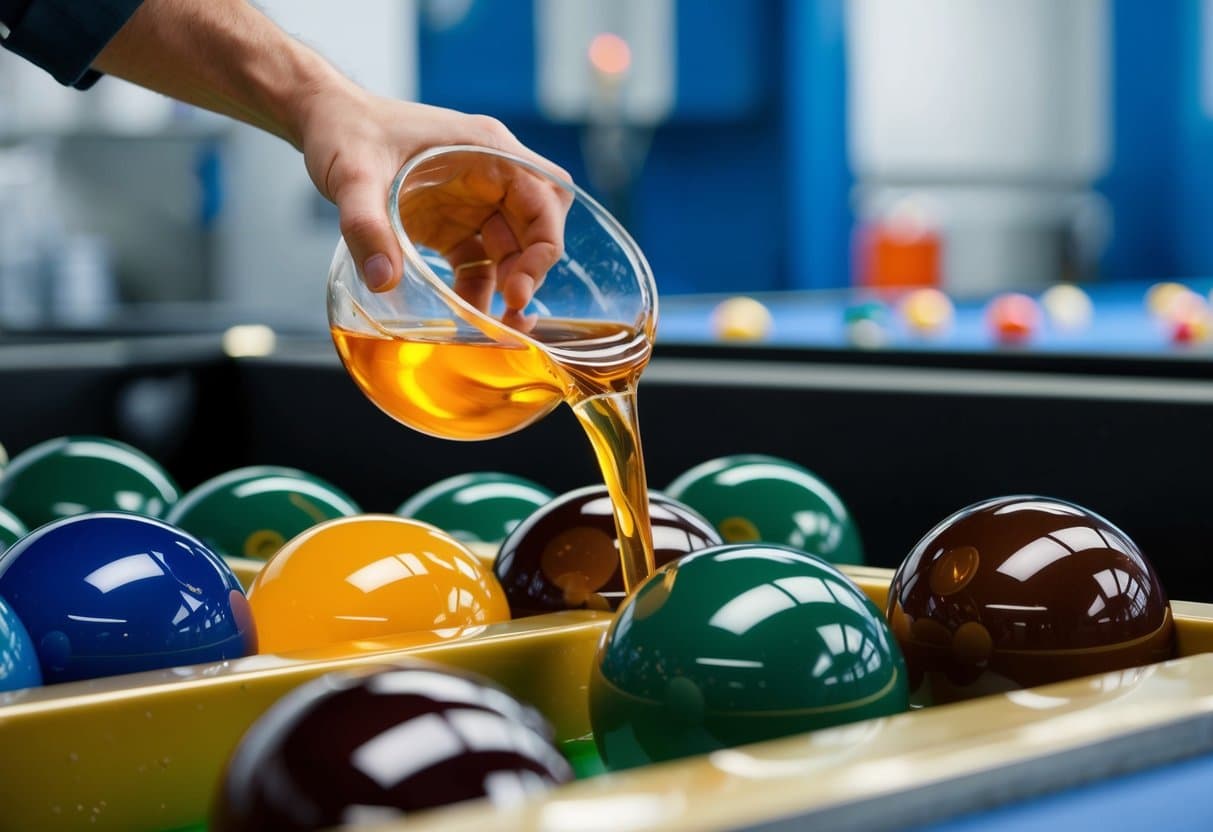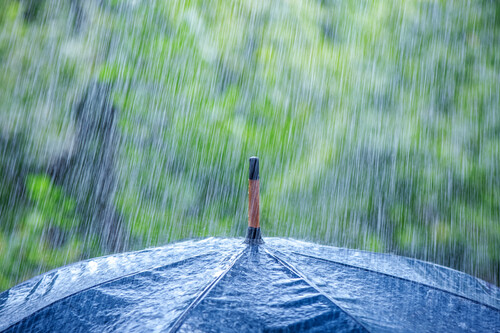Time in the hot tub can be a fun activity; however, you must be very careful when allowing your kids access to this environment. Before your child gets into the hot tub, here’s what you need to know. Children under the age of 5 should not go in hot tubs. Their bodies aren’t able to handle the heat, which can cause them to overheat quickly.
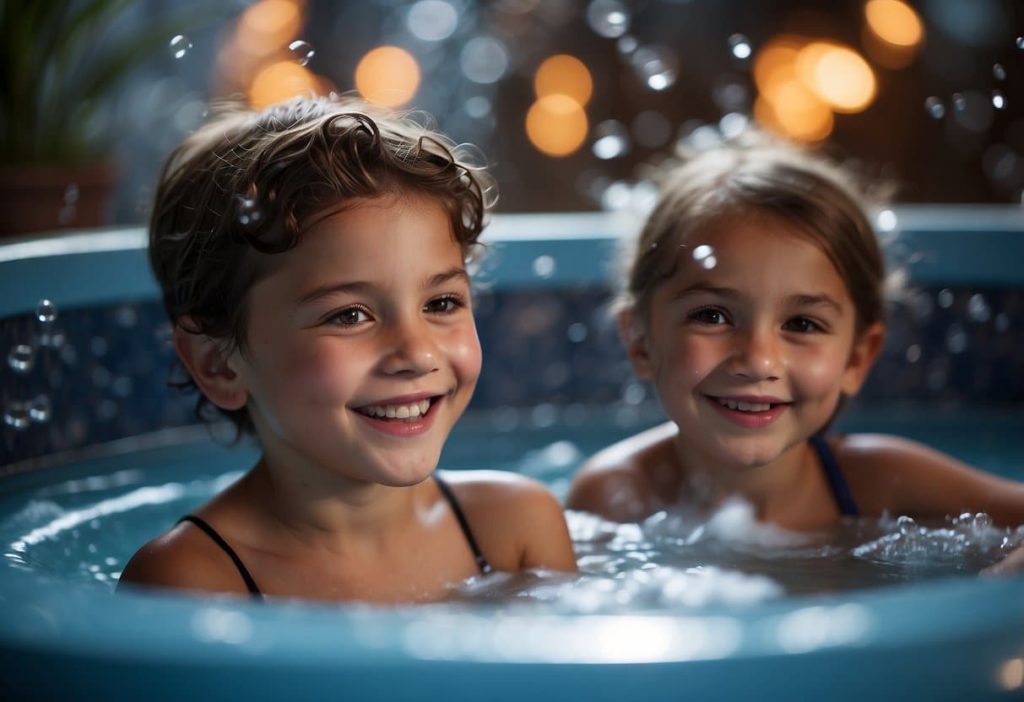
Age Restrictions
Children five years and under should not be allowed in a hot tub. In this age range, kids are too small, which puts them at greater risk of drowning and overheating from the hot temperatures.
It is advised that no matter what age, your child should be supervised when they use hot tubs. For older children, safety guidelines are essential. They should stay in the hot tub for only short periods and always with adult supervision. Ensuring the water temperature is appropriate is crucial to prevent burns and overheating.
Safety measures are key to enjoying hot tubs with children. Always check the water temperature and keep sessions short. These precautions can help avoid any serious health risks and ensure everyone has a good time.
Understanding Hot Tubs and Safety
Hot tubs can be fun, but they also come with risks. It’s important to know the basics of hot tub safety, the importance of adult supervision, and the guidelines set by the Consumer Product Safety Commission (CPSC).
Hot Tub Basics and Child Safety
Hot tubs are designed for relaxation and hydrotherapy. They often have high water temperatures, usually between 35°C to 40°C. For children, these high temperatures can be dangerous. Their bodies heat up more quickly than adults, increasing the risk of overheating or dehydration.
Children should not stay in hot tubs for more than five minutes at a time. They should also sit on the “cool seat” or the ledge of the hot tub to avoid full-body exposure to the hot water. It’s recommended to keep the hot tub cover secure when not in use.
The Role of Adult Supervision in Hot Tub Safety
Adults must always supervise children in and around hot tubs. This helps prevent accidents like slipping or drowning. An adult should be within arm’s reach at all times to react quickly if needed.
Setting strict rules about hot tub use is crucial. For example, no diving or jumping and no running around the hot tub area. Adults should also be aware of the signs of overheating, such as flushed skin or dizziness, and act immediately if they observe them.
Consumer Product Safety Commission Guidelines
The Consumer Product Safety Commission (CPSC) provides guidelines to ensure safety in and around hot tubs. These include setting the hot tub temperature to no higher than 40°C and supervising children closely. They also suggest installing safety covers and alarms to prevent unsupervised access.
Additionally, CPSC advises regular maintenance of hot tubs to ensure clean and safe water. Checking for any electrical issues and ensuring proper chemical balance in the water can prevent health hazards.
Understanding and following these guidelines can significantly reduce the risks associated with hot tub use, making it safer for children.
Risks of Hot Tubs for Kids
Hot tubs carry several risks for kids that parents should be aware of. These include dangers such as overheating, dehydration, drowning, and exposure to harmful bacteria.
Dangers of Overheating and High Temperatures
Hot tubs often reach temperatures of 104°F (40°C), which can be too high for children. Kids have a higher risk of overheating because their bodies do not regulate temperature as well as adults. Overheating can lead to heat stroke, nausea, dizziness, and even fainting.
Parents should monitor the water temperature with a reliable thermometer. Healthcare professionals recommend that children spend no more than 5-10 minutes in hot tubs to avoid these risks.
Dehydration and Heat Stroke
Spending time in a hot tub can cause children to sweat a lot, leading to dehydration. This can cause symptoms such as dry mouth, headache, and fatigue. In severe cases, dehydration can lead to heat stroke, which is a medical emergency.
To prevent dehydration, children should drink water before and after using the hot tub. Adults should keep a close eye on kids to ensure they do not show signs of dehydration or overheat.
The Risk of Drowning and Water Safety
Despite the small size of hot tubs, the risk of drowning is real, especially for young children. Water safety measures are crucial. Kids should always be supervised closely when in or near a hot tub, as drownings can happen quickly and silently.
Barriers like hot tub covers can prevent accidents when the tub is not in use. Teaching children water safety, such as not playing rough or going underwater, is also key.
Infections and Bacteria Concerns
Hot tubs can be a breeding ground for bacteria if not properly maintained. Kids are particularly susceptible to infections like pseudomonas folliculitis (hot tub rash) and Legionnaires’ disease. These infections can cause rashes, skin irritation, and lung issues.
Parents should ensure that the hot tub is cleaned regularly and that the chemical levels are checked and balanced. This can help prevent bacterial growth and keep kids safe from infections.
Safe Hot Tub Practices for Children
Keeping children safe in hot tubs requires careful attention to water temperature and hydration, and ensuring proper suction fittings and drain covers are in place. If you will have children using your hot tub, have spa rules in place to ensure safe use. Appropriate spa rules for child use would be:
Limit Time in the Spa
Kids should only be allowed in hot tubs for 10 to 15 minutes at a time. Taking breaks from the warm water helps minimize the chances of experiencing any of the undesired symptoms discussed above.
Keep the Hot Tub Covered When Not Being Used
An uncovered hot tub can give a small child unwanted entry. Avoid dangerous situations and childproof your hot tub for their safety!
Supervise the Children at All Times
If there are children in your hot tub, then there should be an adult out there supervising. Supervision helps prevent any horseplay that could result in injury and monitor the length of time spent in the hot tub.
Setting and Monitoring the Right Temperature
For children, it is crucial to maintain a safe water temperature in the hot tub. The ideal temperature should be around 37.8°C (100°F). Always use a thermometer to check the water temperature before allowing children to enter. Test strips can also help monitor the heat and chemical levels.
Supervision is essential. Adults should always be present to monitor the water temperature and the children. Limit the time children spend in the hot tub to prevent overheating.
Keeping Children Hydrated
Staying hydrated is important when spending time in a hot tub. Children can easily become dehydrated. Offer them water regularly while they are in and out of the hot tub. Avoid sugary drinks and caffeinated beverages as they can contribute to dehydration.
Taking short breaks out of the hot tub can help regulate their body temperature and ensure they remain hydrated. It is best to monitor their hydration levels closely.
Understanding Suction Fitting and Drain Covers
Properly functioning suction fittings and drain covers are crucial to child safety in hot tubs. Faulty or missing covers can pose a severe risk. Check that drain covers are secure and meet safety standards.
Inspect suction fittings regularly to ensure they are intact and not damaged. Educate children never to play with or near the drain covers and to avoid placing their heads underwater near these fittings. This precaution helps prevent accidents and injuries.
By adhering to these practices, hot tub experiences can be safe and enjoyable for children.
Maintaining a Child-friendly Hot Tub Environment
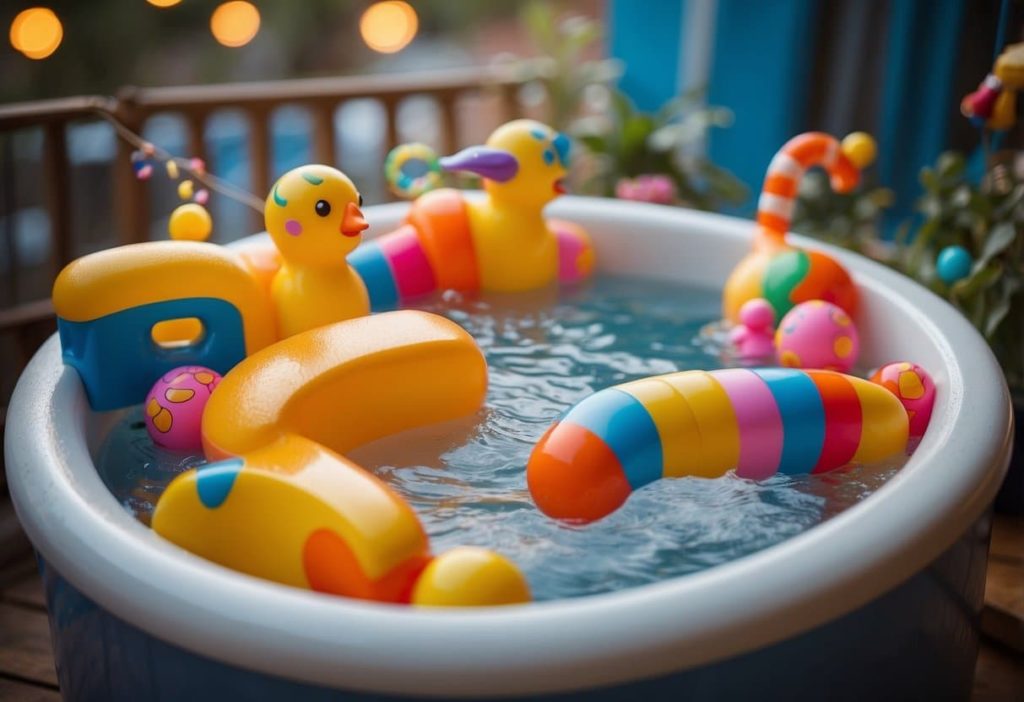
Creating a safe and clean environment is crucial for children using hot tubs. This includes regular maintenance, essential safety features, and consultations with healthcare professionals.
Regular Maintenance and Cleanliness
Hot tubs should be maintained regularly to ensure cleanliness. Filters need cleaning, and water should be tested for proper levels of chlorine and pH.
A well-chlorinated hot tub prevents harmful bacteria from thriving.
Cleaning Schedule:
- Weekly: Inspect and clean filters.
- Monthly: Test water chemistry and adjust as needed.
- Annually: Professional check-up for overall safety and performance.
Following these maintenance steps helps protect kids from infections and skin irritations.
Safety Features in Hot Tubs
Installing safety features can significantly reduce risks for children. A locking hot tub cover prevents unsupervised access. A cut-off switch ensures the tub can be quickly turned off in an emergency.
Important Safety Features:
- Hot Tub Cover: Keeps children out when unsupervised.
- Locking Mechanism: Adds an extra layer of security.
- Cut-Off Switch: Immediately stop the tub if needed.
These features align with recommendations from organizations like the American Academy of Pediatrics, emphasizing the importance of preventing accidents.
Children aged five and under should never enter a hot tub above 95 degrees Fahrenheit. Even kids up to age ten should spend only a few minutes in high heat because their bodies cannot regulate temperature as effectively as adults.
Three Methods of Barricading Your Hot Tub
Regardless of age or temperature, all children need supervision around the hot tub. Therefore, you must secure the hot tub area to prevent your kids from accessing it when you’re not around.
Below, find three easy and effective ways of locking down your spa.
- Latch the Backdoor: Install a door latch out of your children’s reach to stop them from heading into the backyard unattended.
- Invest in a Cover: Purchase a hot tub cover that conserves energy and improves spa hygiene. More importantly, the locking straps that seal the hot tub act as barriers for children. Many even come with rings for padlocks.
- Fence the Hot Tub Area: Building a fence or enclosure around the hot tub can keep children at a safe distance even when in use. Fences work best when the hot tub is already a part of the deck or nestled into its own private corner on the property. Alternatively, you can purchase staircases with railings and gates to stop your children from climbing into the tub.
Why Teach Spa Safety to Your Children
Even if the other safety precautions keep your children from falling into the tub, there are still dangers when you accompany your children in the water. Drowning can happen underwater if hair gets tangled inside the drains or jets. Prohibiting underwater play can avoid accidents even as the kids mature. As well, leaving inflatables handy for emergencies and knowing how to kill power to the tub can increase its safety.
Health Advisory: Consulting a Healthcare Professional
Before allowing children to use a hot tub, it’s wise to consult a healthcare professional. They can guide suitable water temperatures and time limits.
Health experts may advise on specific health conditions that could be aggravated by hot tub use. Consulting professionals ensure the health, safety, and well-being of children.
Seeking professional advice helps in making informed decisions regarding a child’s interaction with hot tub environments.
Additional Considerations for Parents
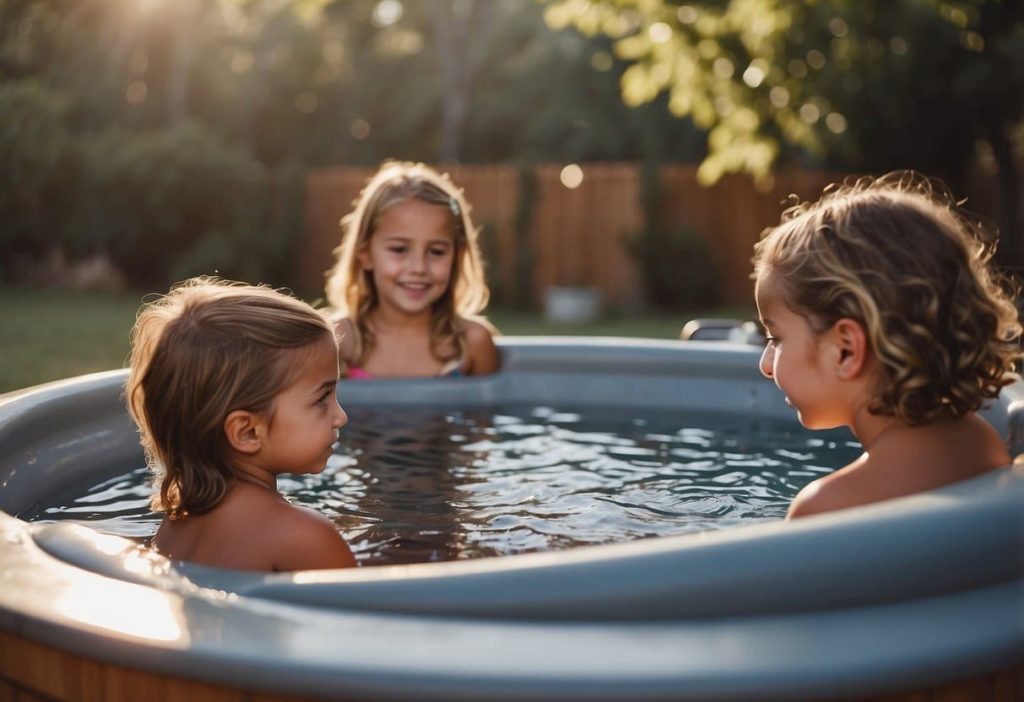
Parents should consider establishing rules, using hot tubs for therapy benefits, and ensuring proper water care for kids’ safety and health.
Establishing Clear Rules and Procedures
Parents should set clear rules for hot tub use. Kids need to know about the dangers of overheating and the risk of drowning. Limit sessions to 10-15 minutes and establish a buddy system. Supervision is crucial; always have an adult nearby. Temperature settings should not exceed 37.7°C (100°F). Create a checklist to follow each time kids use the hot tub, such as making sure everyone drinks water to stay hydrated.
Checklist:
- Have an adult supervise
- Limit time to 10-15 minutes
- Keep water below 37.7°C (100°F)
- Ensure kids drink water
Hot Tubs as a Tool for Therapy and Relaxation
Hot tubs offer therapeutic benefits such as hydrotherapy and stress relief. These can help with muscle aches or joint pain, even in kids. Sessions should be short and supervised. Hydrotherapy can be beneficial for kids with certain medical conditions, like cerebral palsy or arthritis. Always consult a doctor before using a hot tub for therapeutic reasons. Include relaxation time in the family routine to enjoy these benefits.
Therapeutic Benefits:
- Relieves muscle aches
- Helps with joint pain
- Provides stress relief
The Importance of Well-chlorinated Water
Keeping the water well-chlorinated is essential. Dirty water can cause skin infections and other health issues. The Pool and Hot Tub Alliance (PHTA) suggests regular testing. Maintain chlorine levels between 2.0 to 4.0 ppm. Proper water care prevents bacteria and ensures a safe environment. Check and adjust the chlorine levels daily, especially before kids use the hot tub. Use pool test strips to quickly measure chlorine levels.
Water Care Tips:
- Test water daily
- Maintain chlorine: 2.0-4.0 ppm
- Use pool test strips
- Adjust levels before use
Planning for Hot Tub Time on Vacation
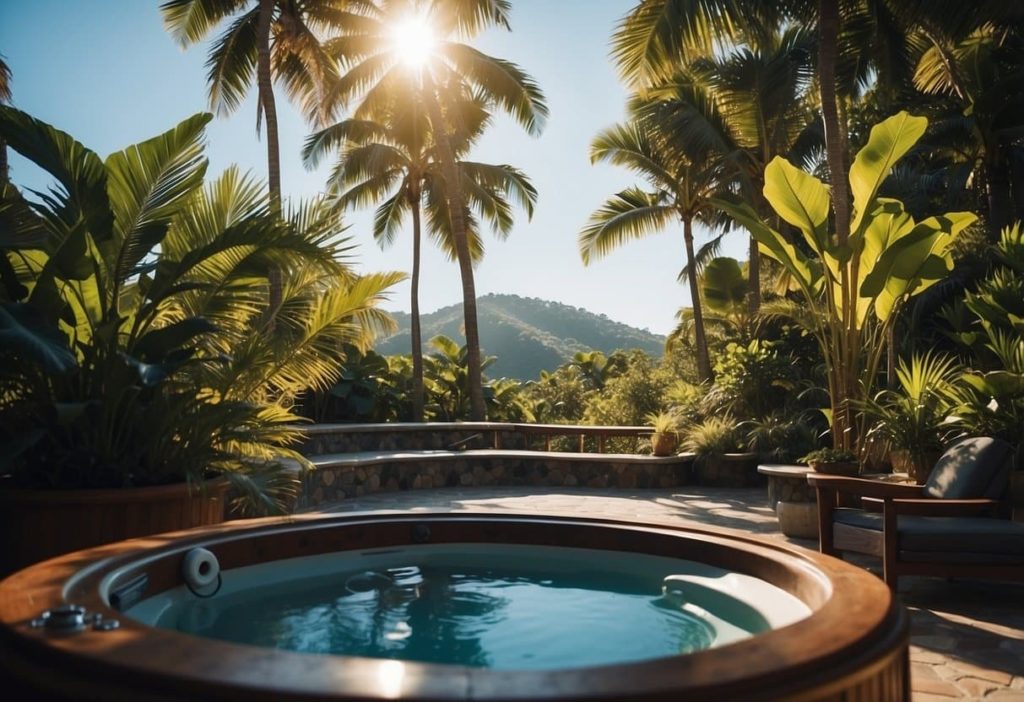
When planning a vacation, ensuring your child’s safety around hot tubs is crucial. Consider travel logistics, safety measures at different venues, and the specific dangers of hot tubs at various destinations.
Travel Considerations with Children
Travelling with children requires extra planning. Pack items like sunscreen, water toys, and child-sized life jackets to make hot tub use enjoyable and safe. Ensure you have drinking water on hand to prevent dehydration.
Consider the weather at your destination. Hot climates may increase the risk of overheating in a hot tub. Check if the venue has separate kids’ hot tubs with lower temperatures. If travelling by car, plan breaks to keep the kids cool and hydrated.
Precautionary Measures at Hotels and Resorts
Hotels and resorts have varying safety standards. Before letting your child use a hot tub, ask the hotel staff about their maintenance routines and safety guidelines. Ensure lifeguards are on duty and that there are emergency communication systems near the hot tubs.
Use the Centres for Disease Control guidelines to evaluate the cleanliness and maintenance of hot tubs. Look for signs indicating when the water was last checked. Avoid overcrowded hot tubs, and remind children not to submerge their heads to prevent ear infections.
Assessing Hot Tub Safety at Holiday Destinations
Different vacation spots may have different rules and levels of safety for hot tub use. Research local regulations on hot tub safety to ensure they meet your standards. Some places may have no regulations, putting kids at higher risk.
Look for reviews online to see what other families have experienced. If staying in a private rental, ask the owner about their cleaning protocols. Lastly, always supervise your child and set strict time limits in the hot tub to avoid overheating.
Frequently Asked Questions
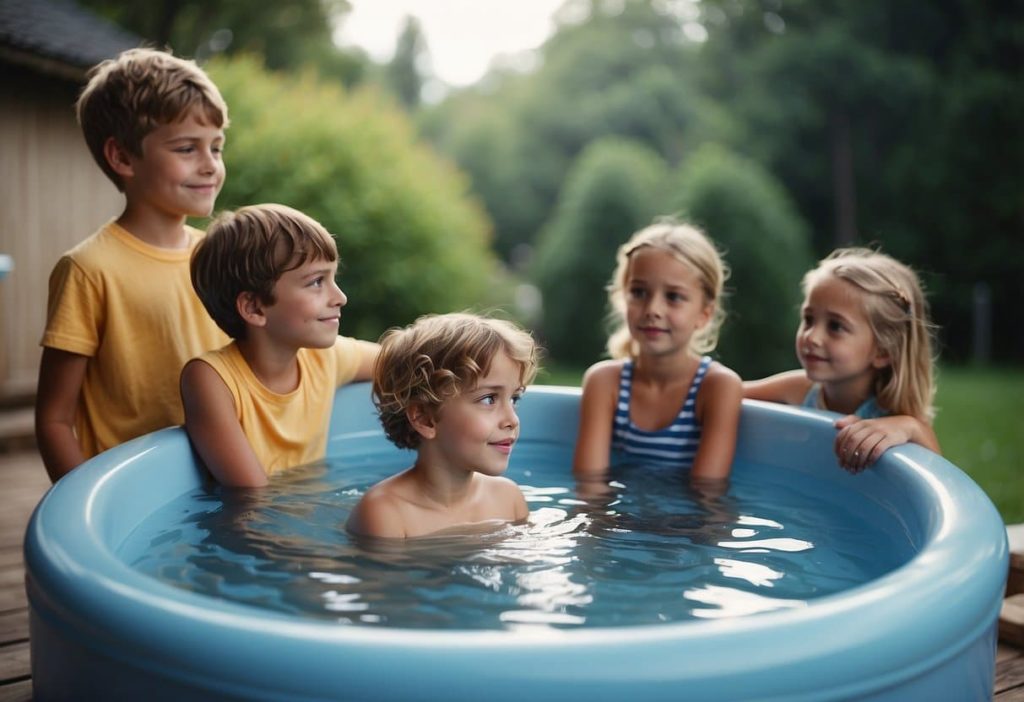
Hot tubs can be fun, but safety must come first, especially for children. Understanding the recommended ages, temperatures, and guidelines is crucial.
What is the minimum age for safe hot tub usage for children?
Experts recommend that children should be at least 5 years old before using a hot tub. Younger children are more susceptible to overheating and dehydration.
At what water temperature is it safe for infants to enter a hot tub?
Infants should not be in hot tubs at all. The high temperature can be dangerous for their delicate skin and can lead to overheating.
Are there any specific age restrictions for hot tub use in Ontario?
In Ontario, there are no specific laws about children’s age limits for hot tubs. However, it’s best to follow general safety guidelines and recommendations from child health experts.
What guidelines does the American Academy of Pediatrics provide regarding children and hot tubs?
The American Academy of Pediatrics suggests that children under 5 should not use hot tubs. For older children, the water should not be over 37.5°C, and they should stay in for short periods.
Is it advisable for toddlers to use a hot tub?
No, it is not advisable for toddlers to use a hot tub. Toddlers can easily overheat and may not understand the risks of being in hot water.
Can preteens safely use hot tubs without adult supervision?
Preteens should always have adult supervision when using a hot tub. Even though they are older, safety issues like overheating and drowning are still significant concerns.



